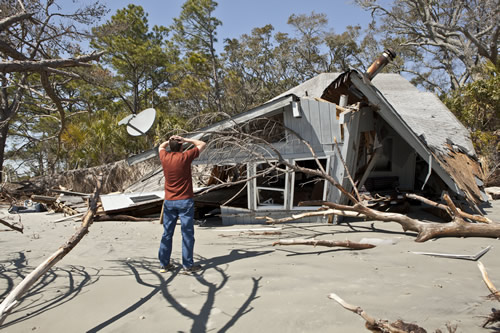The Asbestos Legacy - A simple benchmark for mesothelioma projection
Once widely used in construction, asbestos is known to cause several deadly diseases including the rare form of cancer known as Mesothelioma. Due to its long latency period and poor records of exposure, the number of cases of this disease is difficult to predict. This research compares two established methods of projection in order to determine which is more effective.
Asbestos, a naturally occurring material used extensively in construction throughout a significant proportion of the 20th century, is now most readily associated with the health risks posed by exposure to its fibres and dust. Mesothelioma is one of several pernicious diseases that can arise from such exposure. A rare form of cancer that most typically affects the lungs, it is known to have a long latency period, predominantly affects men and is the cause of an increasing number of deaths in the UK. In 2013 there were 2049 deaths of men under the age of 90 that were caused by mesothelioma. Therefore it is of considerable importance to health services and actuaries that an accurate forecast of the future burden of mesothelioma deaths can be made.
This study compares two established methods of achieving this aim, in order to determine which could be most recommended. The first method looked at the number of deaths within an age-cohort structure. The data used here was for the period 1968-2013, and was supplied by the Health Service Executive.
The second method involves a synthetic measure for exposure. Due to the long latency period of asbestos related illnesses, consideration of exposure to harmful asbestos fibres could be considered necessary for an accurate projection of future mortality rates. Although the UK keeps good records of number of mesothelioma deaths there are no records of exposure to asbestos fibres, thus necessitating the development of the synthetic measure. The data used here was also supplied by the Health Service Executive and concluded in 2010.
The results of both models show that the number of mesothelioma deaths continue to rise and have yet to peak. Despite the increased complexity of the second model however, the first model is shown to give forecasts that are as good, if not better. That it can be analysed using standard generalised linear model techniques also commends it. The study therefore recommends using the first method, known as a simple response-only model, as a benchmark for mesothelioma projections.
The UK's largest independent mesothelioma charity, The June Hancock Mesothelioma Research Fund, commented:
"This research shows that male mortality from mesothelioma is predicted to rise beyond previous peak forecasts. When we also consider the number of women developing mesothelioma, total annual figures also increase. The number of cases in the UK alone highlights the need to fund research to improve the treatment and outcomes of people affected by this devastating disease."
This research may assist industry in assessing the potential cost of UK asbestos related claims. A draft version of the research paper is available for download at the link below.




